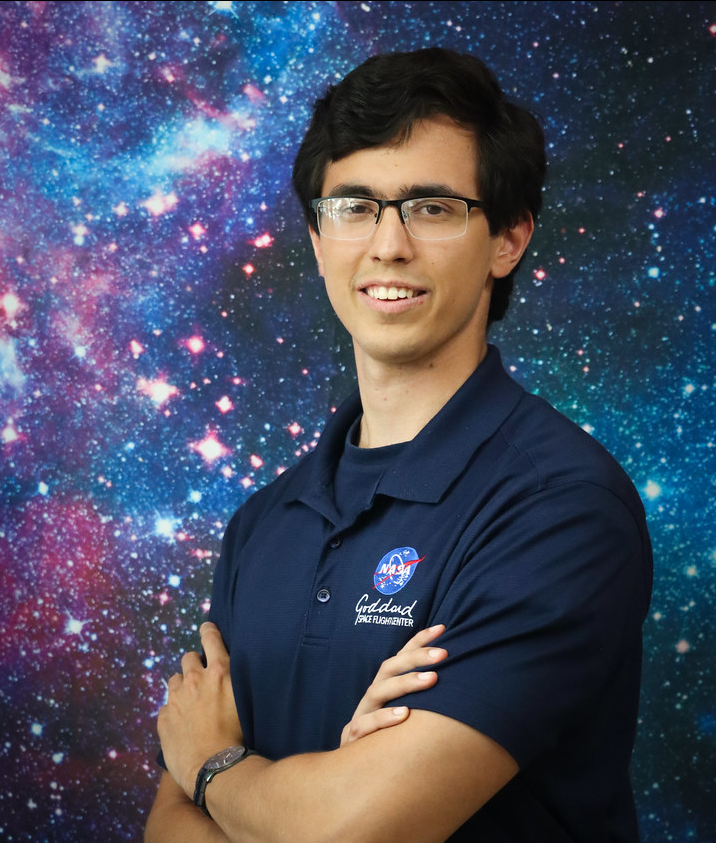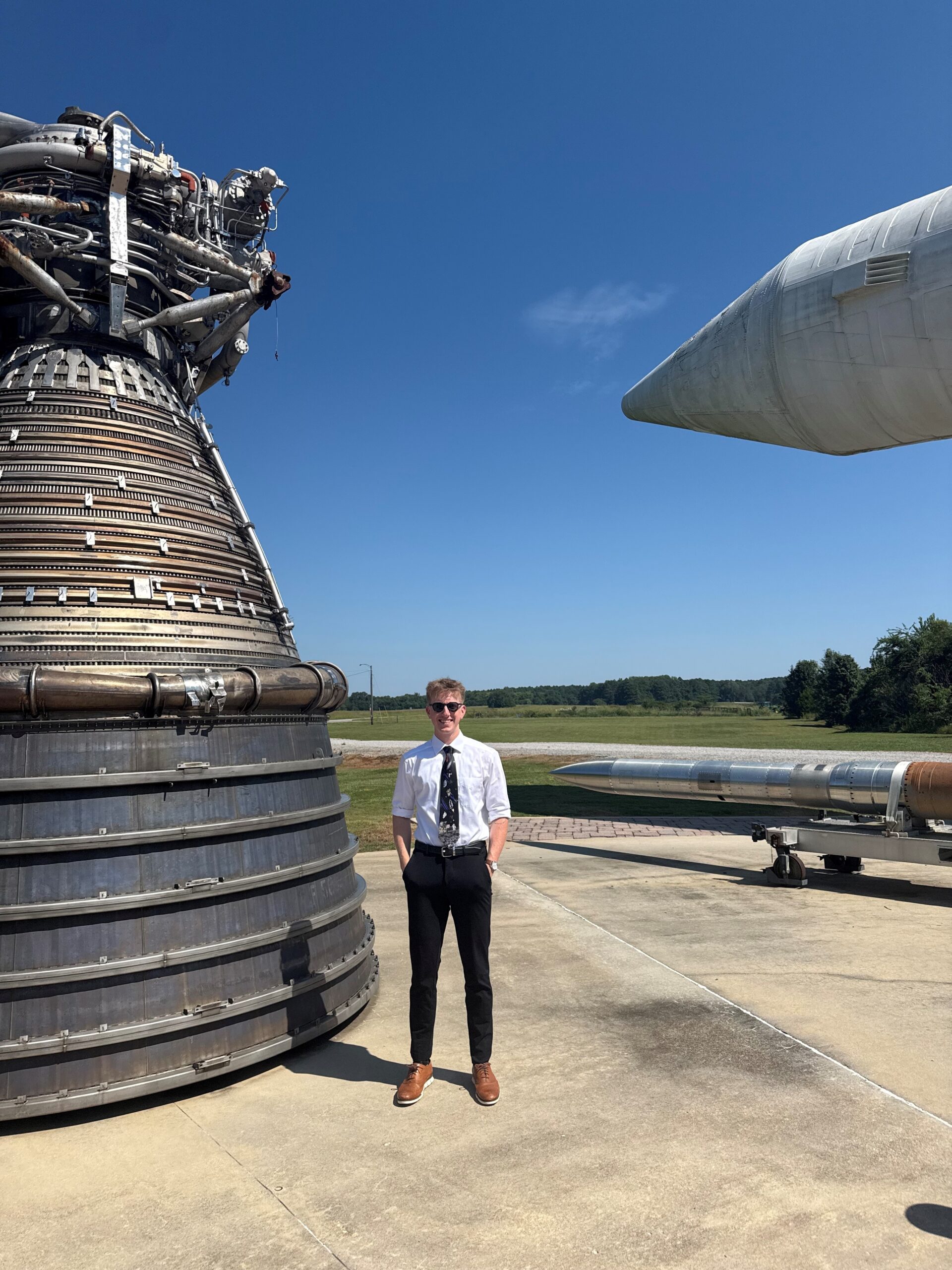Matthew Staber- Johnson Space Center

Accomplishments:
I developed new Isotonic mode firmware for the PKD (knee dynamometer), enabling astronaut strength training and rehabilitation at torques up to 240 ft-lb. I also contributed to ARC-ANGEL, a wearable system simulating lunar and Martian gravity, by building software and middleware for ODrive motor controllers, supporting the successful Test Readiness Review (TRR) and prototype deployment. Additionally, I assisted in the mechanical design of the UPRITE rack, a proprioception-training device, focusing on safe shell integration for astronaut use. I collaborate daily in a team of four interns and six mentors, integrating hardware, software, and firmware solutions across projects. Beyond project work, I engage with over 130 interns through the PIPE/SCuM professional groups, where I help organize events and participate in intern rocketry.
Mid-term Goals:
I plan to continue advancing the ARC-ANGEL system, improving performance and reliability of the ODrive control software gui, and supporting upcoming testing in NASA’s ARGOS offload facility. I also hope to refine the isotonic mode firmware for the PKD to further enhance astronaut training capabilities and to contribute to system-level integration across the hardware and software teams.
Impact:
This internship has been one of the most amazing experiences of my life. I’ve learned so much from incredibly talented mentors and peers. The intern community, both professionally and socially, has been inspiring and supportive, and I’ve built connections that I truly value. This experience has strengthened my passion for STEM and for NASA’s mission!I hope everyone has the opportunity to work in an environment like this someday, whether in STEM or Non-STEM, because it’s been wonderful.
Adam Rutecki – Collins Aerospace
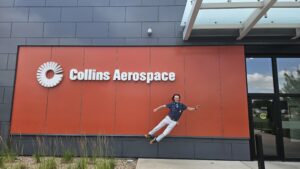
Describe what you did during your internship:
Throughout this internship, I was able to get hands-on experience performing first unit integration and testing of software-defined radios and high-power radio amplifiers. This allowed me to gain many insights into intentional design decisions that are made for space environments and interfaces between hardware, firmware, and software and their integration. Throughout this, I significantly deepened my understanding of Python by writing automated tests, firmware interfaces, and testing user interfaces. I also have significantly expanded my knowledge of secure RF communication theory and digital signal processing through mentoring sessions with engineers and on-the-job learning resources provided by Collins. Lastly, I was able to assist with requirements traceability work and test procedure development, giving me a valuable insight into this important work that ensures customers receive working hardware to fulfill their missions.
Did you achieve your goals?
In summary, this internship provided useful and insightful experience that will prove valuable in understanding and continuing to work on applications of terrestrial technology to space. The experience has also connected me with many great mentors and leaders, and will prove useful in helping me secure a full-time job before graduating in the spring of 2026.
Describe positive lessons learned:
One of the most valuable lessons I took away from this summer was the importance of prioritizing learning and professional development to deepen my understanding, as well as seeking out strong mentors to support my growth as both an engineer and a leader.
Describe negative lessons learned:
I did not realize the importance of advocating for my interests in an internship program that offered flexibility in terms of the types of work I could do.
What was the impact of this internship?
Being a part of this team has given insight into how crucial of a role solutions for space can play, and how commercial solutions can be quickly adapted for low earth orbit applications.
Ryan Muetzel – Goddard Space Flight Center
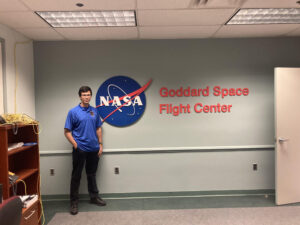
Describe what you did during your internship:
I had two tasks in the internship. The first was to familiarize myself with MagicDraw MBSE modeling. To do so, I was given a training project to learn the systems, so I could later build tools that would integrate with MagicDraw development. During the training project, the design decisions were also intended to be used an example training guide for future systems engineers. The second task was to develop a tool for test plan creation. The goal was to create a series of AI agents that would take functional requirements, create test plans for each requirement, and then consolidate test plans where they overlap to increase testing efficiency. These test plans would still need to be reviewed by professional system engineers, but this tool was designed to bootstrap the initial phases of systems engineering and skip a lot of the initial work typically incurred at the start of a project.
Did you achieve your goals?
Both projects went really well. The training model was completed quickly, and I learned a lot to help me in the second task. This basically taught me the process for completing the three tasks listed in the project goal, which I leveraged to improve development of the test plan processing software. The final output from the second task was successful, and I created a proof of concept system that was able to process the majority of requirements into usable test plans for systems engineering development. The solution is not yet perfect and there are a handful of issues that need to be handled in the future. However, the final program that I had created lays the groundwork for future development to revolutionize how systems engineering work is done.
Describe positive lessons learned:
I learned a lot during this experience. I took a deep dive into learning how systems engineering development works, especially at the onset of a project. This was also my first experience working with an AI agent for a dedicated task. Training and tuning the AI’s output was certainly a learning experience, and taught me a lot about what they can and cannot be used for.
Describe negative lessons learned:
I think the main negative lesson I learned is that there may not always be a solution, at least with the current mindset. Looking at a problem or architecture from a different perspective can reveal the real issue or at least provide insights into the issue at hand. A mindset change, based on a new perspective, may reveal that the current idea is not feasible and requires a new approach. This was a painful lesson for me to learn, when I realized I needed to rebuild my architecture for the second project, but making that change and rebuilding let me make a successful final solution.
What was the impact of this internship?
This internship has shown me how software and AI can be used to solve real-world engineering problems, especially in space missions where reliability is critical. It’s made me more interested in working on tools that support large, complex engineering projects.
Gabe Holden – Marshall Space Flight Center
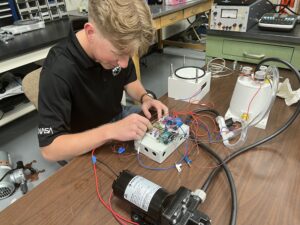 Describe what you did during your internship:
Describe what you did during your internship:
During my internship with ER-63, I focused on supporting the development of accurate models and control methods for a BLDC motor applied to an inertial load simulator. I researched and implemented data acquisition methods using a Magtrol DSP7001 controller paired with an HD-715 dynamometer, enabling precise measurement of motor behavior. Using LabVIEW and MATLAB, I derived key motor parameters including rotor inertia, viscous friction, and Coulomb friction, which supported the building high-fidelity Simulink models. I also supported deploying field-oriented control (FOC) on the BLDC motor through the Arduino SimpleFOC library, allowing for improved torque control and motor efficiency. Additionally, I designed and tested a physics-based soft-stop safety feature in Simulink and created a quick-start guide to streamline future use of the inertial load simulator.
Did you achieve your goals?
All of my objectives were completed over the course of the internship. I established reliable DAQ methods, extracted accurate motor parameters, and implemented FOC, supporting the creation of validated Simulink models and improved motor control. These outcomes advanced ER-63’s testing capabilities and provided practical tools for future users.
Describe positive lessons learned:
My favorite part of being with NASA has been the contagious amount of passion circling around. Everyone has an open door and are ready to share their work with you. Interning with NASA is much deeper then just coming into work for eight hours every day to complete a few tasks. There is purpose and meaning behind work given to interns and it is an incredibly cool opportunity to be a part of. I have learned endless amounts of information, as shared in this report, that I have never touched and may not touch in class.
Describe negative lessons learned:
This summer has presented trialing times to NASA as an entirety, this has forced some uneasy and uncertain situations. As an intern it has been challenging to unfold the chances of returning.



